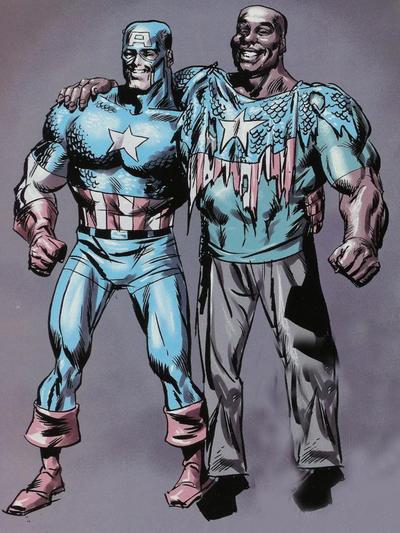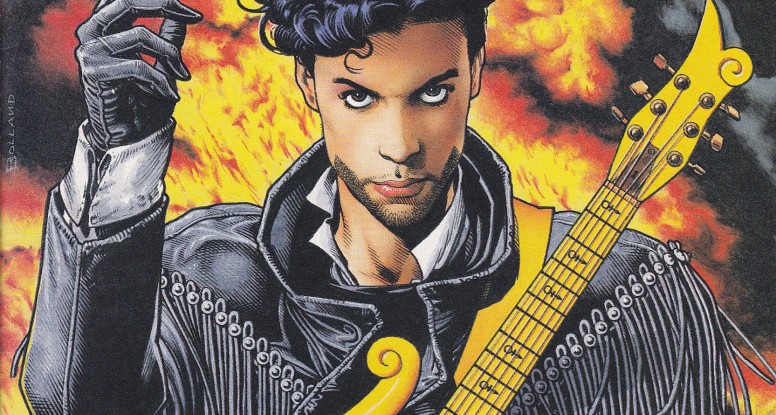Why do Black People Love Captain America? Idealism, honesty and integrity.
As many of our readership are aware, social media affords individuals from the far flung corners of the globe to engage in discussions about some their favorite subject matters. To that end, I am a member of several Facebook groups dedicated to Black comic book fans. With all of the injustices against African Americans that have been perpetrated in the United States since the advent of this grand social experiment, and the realization of such crimes by contemporary Black folks, I sometimes wonder why Captain America has so many fans of African descent, present party included.
I mean really; it doesn’t get any whiter than the Sentinel of Liberty.
So I posed a simple question to several groups Why Do Black Folks Love Captain America? The answers were as numerous as they were hilarious. Some said its because he represents what a true citizen of the world should be, others said its because he isn’t afraid to stand up for the unrepresented and the downtrodden. Indeed, they made him sound like the illegitimate offspring of Tom Hanks and Kevin Costner.
“Cap” was created in 1941 by writer Joe Simon and artist Jack Kirby in response to growing culture of patriotic superheroes that littered the landscape at the time. However, none have lasted as long as good old Stars and Stripes.

He is a character that repeatedly drives me to snatch issue after issue out of the back issue bin labeled “Captain America.” I can easily recall the story of his origin, his exploits with Nick Fury and the Howling Commandos that were published throughout the 60’s and 70’s, his battles against the world dominating efforts of the Red Skull and Baron Zemo and his ability to galvanize individuals who appear far more capable than he on the surface. Cap has consistently evolved his ideology to stay in tune with the sociopolitical ebb and flow that is apparent in the greater American society from time to time.
However, he is not alone in doing so in the pages of comic book lore.
I initially began reading his books as a youngster because it helped me place the exploits of those men and women who fought against boundless evil during World War II to topple Adolph Hitler and the Nazi Party in some context. It was my first clear-cut example of good versus evil in the real world and I imagined that there were thousands of real life Captain Americas out there who never spoke of their deeds in the field of battle and may have been overlooked when it was time to collect accolades. Men like my maternal grandfather, who rarely spoke of the war when quizzed of his exploits by my siblings and I. So in my young mind, Captain America represented my grandfather and countless others. This Star Spangled Avenger was the impetus for me to delve into encyclopedias and history books to find that fault line where reality and fantasy met.
He exemplified the idealistic view of America like no other character in comic books. Eventually, storylines that featured Captain America began to segue into more of a Cold War footing with many illustrating Cap fighting overt wars against the likes of the super-secret terrorist organization Hydra or its offshoot and eventual rival A.I.M. Captain America even fought against communism, though the mantle of this McCarthyist version was not the real Steve Rodgers, who was still frozen in a block of ice in the Arctic Ocean, but historian William Burnside.
The 1960’s were a time of great tumult in the United States from a political, social and racial perspective. The Civil Rights Movement swept through the country, leading to dramatic changes across the Nation and the world. In the world of comic books, brothers and sisters of African descent, with the exception of Gabe Jones from the Howling Commandos, were a glaring omission from the pages of Captain America.
However, Marvel would remedy that by having Captain America team up with Sam Wilson aka Falcon-who was the first superhero of African descent in mainstream comic lore. That was a happy day for me, indeed. But much of that luster wore off when Marvel retconned Sam Wilson’s origin story to make him a street hustler from Harlem who was rescued from the game by Captain America. While it was well intentioned, it was racist as all get-up; but that wasn’t Caps fault that White writers didn’t know how to create a decent backstory for a Black character.

As the years marched into decades, Captain America continued his evolution and reflected the times in which the books were published as well. The 60’s were filled with one political scandal after another and many began to question the motives of their government. This thread was tugged upon in the pages of “Captain America” #180 (Dec. 1974) when Rogers discovers that a sitting president of the United States was actually the leader of the nefarious organization Secret Empire. Disillusioned, Rogers becomes Nomad, the literal definition being man without a country.” But that only lasted four issues before Rogers became Captain America again. Like any true American, Captain America protested against a system that he felt had become tainted. He eventually realized that he could support American ideology without blindly following the United States government.
In 2003 it was retconned that Captain America, aka Steve Rogers, was not the only surviving participant of the super soldier program in “Truth: Red, White and Black.” It is revealed that Black soldiers were used as guinea pigs for the program. One of those soldiers was named Isiah Bradley. He suffers greatly, more so at the hands of his own government than the Nazis he helped vanquish, because of the experiments.

The garb and guise of Captain America would change hands once again in 1988 when he is sickened by corruption and takes up the ebon garb of the Captain in “Captain America” #337 (January 1988)
As history continues to unfurl before us all, so too does Captain America. Following the horrific events of September 11, 2001, Cap revealed his identity (Captain America vol. 4 #1-7) to the general public and moved to the Red Hook section of Brooklyn.
He then fought against a federally mandated drive to register all super-powered beings in the seven-issue Civil War miniseries (July 2006-Jan 2007) and leads the resistance counter to the ideology and forces of Iron Man aka Tony Stark.

Despite all of the battles that Captain America fought and won, he was never written as a man beyond the need for earthly connections and emotions. His one-time sidekick, Bucky Barnes, was thought to have died in the very same explosion that thrust Captain America into his icy slumber in the closing days of World War II, and he was still believed dead after Caps revival. When it was revealed that Bucky had been fished out of the water, revived and trained as the super assassin The Winter Soldier by the Soviets, Rogers continued in his attempts at reforming his one-time friend who, for his part, balks at Caps overtures. However, that doesn’t stop him from trying over and over again. Also, unlike other illustrated heroes, Captain Americas abilities are shown to have their limits as well.
While reading the “Age of Ultron” arc of The Avengers a most telling phenomenon is revealed in the final panel of issue 1. In the arc, The Avengers arch nemesis, Ultron, figures out a way to attack our heroes from the future and most of the population of the United States has been reduced to smoldering piles of radioactive ash. All of the remaining heroes are struggling to come up with a battle plan but are at a loss because no one knows exactly whats going on. Clint Barton (Hawkeye) is reprimanding his fellow heroes for hiding from the merciless onslaught that Ultrons nuclear-powered mechanisms have wrought and Iron Man tells him that theyre working on a plan.

We turn the page to see Captain America, his signature chainmail armor in tatters, sitting quietly in a corner, despondent, with his head in his lap, as he struggles to comprehend the sordid affair. Of course, Cap would eventually snap out of his stupor in the following issue. However, the fact that the most capable battlefield tactician in the Marvel Universe is rendered ineffective by uncertainty and fear by writer Brian Michael Bendis showed that Captain Americas primary mandate is to be human. Arguably, the most unapologetically human of all his contemporaries. Brilliantly done in my estimation.

Recently, Steve Rogers has begun aging at an accelerated rate due to the vaunted super soldier serum somehow being drained from his body. He has since donned an exoskeleton so that he can continue to participate in field missions, relinquishing the garb of Captain America once again- this time to former sidekick Sam Wilson, perhaps as a metaphor for the passing of the old ways of America to one that embraces change and promotes the idea of finding the right guy for the job, regardless of color, ethnicity or social standing.

Ideologically, Captain America represents everything that the United States should be, isnt yet, but still can become. He is honest, he is noble, he is inclusive. He is fair, he is nonjudgmental and he is imperfect in his perfection. This is the reason why many African Americans call Captain America aka Steve Rogers their favorite superhero of all time, despite his Caucasian pedigree, blue eyes and blonde hair.
Maybe it’s because, after all this time, Captain America is one of the few superheroes who have always “kept it real.”


